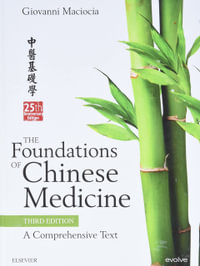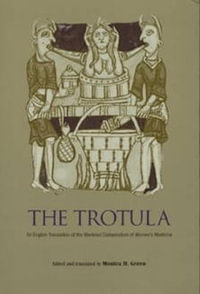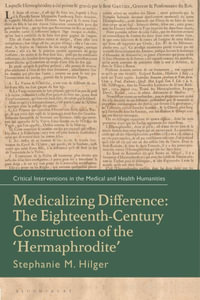Chinese Studies and the Issue of Fachprosa Research.- I: The Study of Ancient Chinese Medical Literature in Contemporary China and Japan. Surveys and Examples.- Classic Chinese Medical Literature in Contem-Porary China: Texts Selected for Modern Editions, and Problems Associated with This Work.- A Brief Historical Retrospect.- The Necessity and Significance of Furthering Collation and Publication.- Problems Associated with Collation, Annotation, and Revision.- (1) Omissions, Disarrangements, and Miswritten Characters.- (2) Wrong Annotation.- (3) Misunderstandings in Ancient Texts.- (4) Wrong Punctuation.- Problems Associated with the Translation of Chinese Medical Classics into Foreign Languages.- A Brief Conclusion.- The Interpretation of Classical Chinese Medical Texts in Contemporary Japan: Achievements, Approaches, and Problems.- New Materials Used in Reexamining the Medical Classics.- The Ma-wang-tui Manuscripts.- The Wu-wei Formularies.- The Ishimpo.- The Hsiao-p'in Fang.- Reexamining Medical Texts in the Light of the New Materials.- The Huang-ti Nei-ching.- Materia Medica.- The Shang-han lun.- Other Classics.- Conclusion.- The Collation and Annotation of the Rare Book Lu Chanyan Bencao: A Medical Literature Research Project.- The Discovery of the Lu Chanyan Bencao.- General Information Regarding the Lu Chanyan Bencao.- The Necessity of Correct Interpretation and Clarification.- Bibliotic Research.- About the Author.- The Regional Character of the Text.- Determining the Species of the Herbs.- Textual Collation and Annotation of the Lu Chanyan Bencao.- The Pen-Ts'ao Pei-Yao: A Modern Interpretation of Its Terminology and Contents.- The Pen-ts' ao Kang-mu.- The Pen-ts' ao Pei-yao.- Different Approaches to Drug Usage.- The Relationship Between the Pen-ts'ao Pei-yao and the Pen-ts'ao Ts' ung-hsin.- Various Editions of the Pen-ts' ao Pei-yao.- Early Japanese Editions.- Early Republic Editions.- A Critical Appraisal of the Pen-ts'ao Pei-yao.- II: Translating Chinese Medical Literature into European Languages. General Considerations.- Rectifying the Names: Suggestions for Standardizing Chinese Medical Terminology.- Words and Concepts.- Technical Terms.- (1) Fixed Terms.- (2) Historic Terms.- (3) Conditionally Stipulated Terms.- The Need for Standard Equivalents.- Illustrative Examples.- (1) Physiologic Terms.- (2) Pathologic Conditions.- (3) Methods of Treatment.- Conclusion.- Obstacles to Translating Classical Chinese Medical Texts into Western Languages.- Process and Denomination in the Huangdi Neijing.- Coupled Expressions.- Translation of Numerology.- In Search of a Term Translation Strategy for Chinese Medical Classics.- Basic Issues.- Transliteration.- Literal and Symbolic Translation.- Explanatory Translation.- III: Reflections Associated with the Rendering of Specific Texts.- Linguistic Reflections on the Translation of Chinese Medical Texts.- Introductory Remarks.- Translation Science and Linguistics.- Issues Encountered in the Translation of Technical Texts.- Technicality and Cultural Context of Fachprosa Translation.- The Issue of Untranslatability.- Contrastive Semantics and Cultural Incongruity.- The Etymologic Issue.- Translation by Transliteration.- Prerequisites for a Translator.- Concluding Remarks.- Terminological Problems Encountered and Experiences Gained in the Process of Editing a Commentated Nan-Ching Edition.- Introductory Remarks.- The Historical Context of the Nan-ching.- The Acceptance of the Innovative Character of the Nan-ching in Later Centuries.- The Translation of Generic Terms.- The Translation of Metaphoric Terms.- Ambiguities.- The Issue of Different Target Terms for One Single Source Item.- Conclusions.- The Yin-Shan Cheng-Yao, A Sino-Uighur Dietary: Synopsis, Problems, Prospects.- The Text of the Yin-shan Cheng-yao.- The Author and the Yuan Court.- The Problem of Culture.- The Cultural Strata.- (1) The Chinese Medical and Dietary Tradition.- (2) Mongolian Elements.- (3) The Uighur-Iranian Complex.- The Problem of Translation.- (1) The Problem of Culture.- (2) Terminology and Culture.- (3) Other Terminological Problems.- (4) The Required Approach.- Conclusion.- Translating and Interpreting the Fu-Ch'i Ching-i Lun: Experiences Gained from Editing A T'ang Dynasty Taoist Medical Treatise.- Preliminary Remarks.- The Different Techniques of Nourishing Life.- The Historical Background of the Fu-ch'i Ching-i Lun.- Metaphoric Terms.- Technical Terms.- IV: The Status of Research of Ancient Indian, Arabic, and European Medical Texts.- Terminological Problems in the Process of Editing and Translating Sanskrit Medical Texts.- Terms for Objects, Terms for Ideas.- Illusory Metaphors.- Levels of Language.- Word Order and Grammatical Words.- Anachronistic Terms.- Concluding Remarks.- The Philological Rendering of Arabic Medical Texts into Modern Western Languages.- The Corpus Medicorum Graecorum et Latinorum: Problems Related to the Philological Rendering of Medical Texts from Classic European Antiquity.- List of Authors.

























